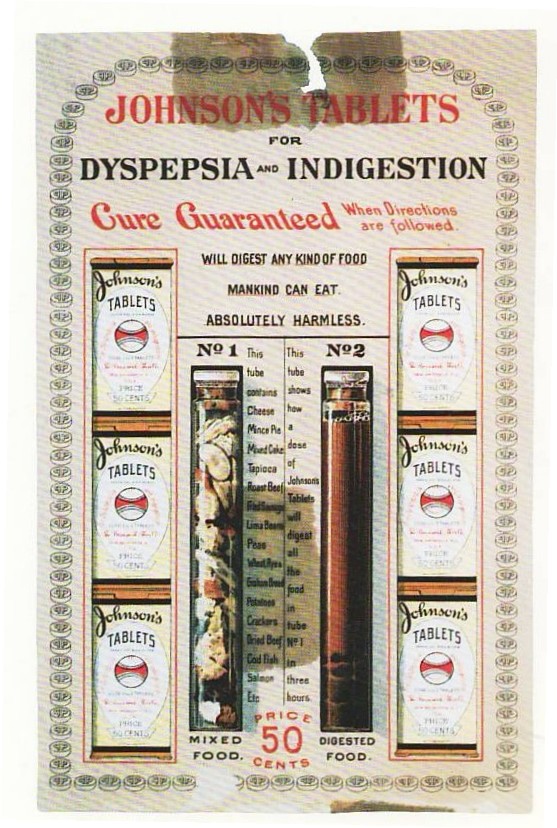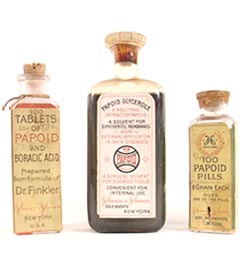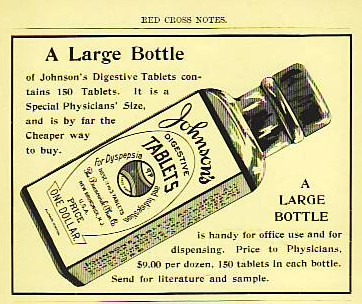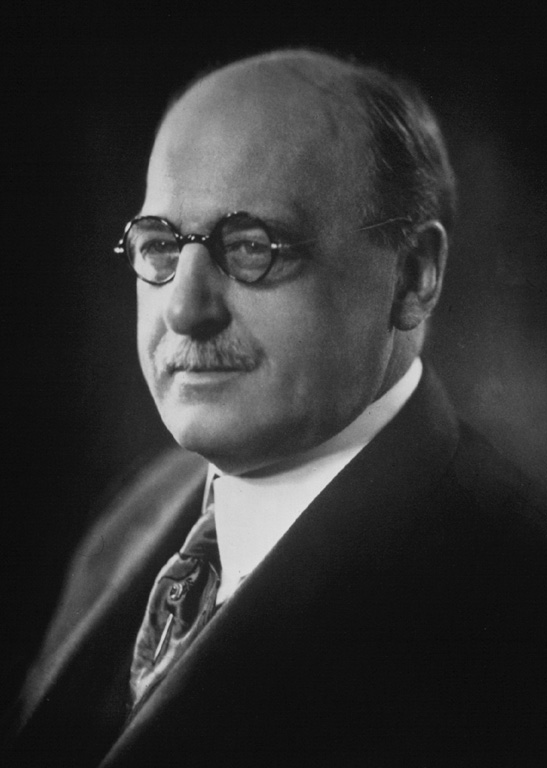Dyspepsia

It’s a sign of the times. People feel hurried, under stress in a time of rapid change. Their diets have expanded but they’re not eating the right foods. And all of that is taking a toll on their digestion. Quick --what year is it? The answer may surprise you: it’s 1888. Indigestion, or dyspepsia, was so common in the United States at the end of the 19th century that it was referred to as America’s “national disease.” The diet at the time was heavily tilted toward meat and potatoes (even for breakfast!) accompanied by heavy sweets, such as cakes and pies. The need for products to combat dyspepsia naturally did not escape the notice of the Johnson brothers. And they turned to…a tropical fruit.
At Johnson & Johnson, serious attention was being given to experiments with the Carica papaya fruit from Central America. The juices from the papaya broke food down in a way that was very similar to human digestion, with the result that it was thought to be the perfect remedy for indigestion, or dyspepsia. The Company conducted numerous scientific experiments with papaya extract, and made a range of products with names such as Papoid, Dr. Finkler’s Papain, Essence of Carikola (which contained both papaya extract and kola and was marketed as a combination digestive aid and stimulant) and JOHNSON’S® Digestive Tablets.

Papoid was the first of these products marketed by the Company. It originally was developed by a company in Germany, and it appears in the Johnson & Johnson 1887 price list. From this beginning, the Johnson brothers began investigating and developing their own products based on papaya extract.

Ad from 1899 RED CROSS NOTES
Fred Kilmer detailed their experiments with the Carica papaya in RED CROSS NOTES, which was the Company’s scientific journal for doctors and surgeons.

Edward Mead Johnson
Founding brother Edward Mead Johnson was particularly interested in these investigations and in the ability of Papoid products to help digestion. The experiments with these products occupied more and more of Mead Johnson’s attention, with the result that in 1897 he left Johnson & Johnson to head the American Ferment Company, a small subsidiary company in Jersey City that focused on the development of papaya-based products. One of these products, Cartoid, helped infants who had problems digesting milk. Johnson changed the company name to Mead Johnson & Company, and in 1915 moved his business to Evansville, Indiana, where the company still is located today.
Although the early Papoid products are an historical footnote, products made from the papaya still are used by many people today to help digestion and to tenderize food. Here’s an interesting photo from our archives: it shows Scientific Director Fred Kilmer (on the left) and the Company’s Secretary and Sales Manager, Alexander R. Lewis (right) posing for an advertisement for JOHNSON’S® Digestive Tablets. The banner fastened to the tablecloth says “YOU CAN EAT ANYTHING AND BE HAPPY AS LONG AS YOU USE JOHNSON’S® DIGESTIVE TABLETS.”

Hi, I was just wondering if you could please post the surname of the person who wrote this article? (I wish to cite it as a reference in an academic essay)
Thanks,
Libby.
In reply to by Elizabeth Clement
Hi Libby,
Absolutely! I'm the author of the post -- and the blog. My last name is Gurowitz. You can also find that information on the "About the Author" page of the blog: http://www.kilmerhouse.com/about-the-author/
Margaret
Hi Margaret,
Thanks- I have just cited it now.
Best,
Libby.